Table Of Contents
- The differences between Bullets, Calibers, and Cartridges
- History of Bullets
- What Does Caliber Mean?
- Beginners Guide to Bullets, Calibers and Cartridges
- Bullets vs. Cartridges
- What Does Ballistics Mean?
- What Does Bullet Stopping Power Mean?
- Common Types of Bullets, Cartridges, and Calibers
- Different bullet casing and what it does
- Recommended Reading
We put together the Ultimate Guide to Bullets, Calibers, and Cartridges.
The differences between Bullets, Calibers, and Cartridges
The bullet, caliber and cartridge are the three essential components of a firearm. Knowing the differences and understanding each of them is key to a successful and safe shooting experience.
Bullets
Bullets are the projectiles that are fired from a gun. They come in many different sizes, shapes, and materials. Common types include lead, copper, aluminum, and steel. The size of a bullet is typically determined by its caliber, which is the diameter of the bullet measured in inches or millimeters.
Calibers
Calibers are the metric measurements of the size of a bullet. They are usually measured in millimeters or inches, although some cartridges use a combination of both. The caliber of a bullet is important because it determines the size and type of firearm that can be used to fire it.
Cartridges
Cartridges are the complete units of ammunition that contain a bullet, a primer, a propellant, and a casing. The casing is the part of the cartridge that houses all of the other components. The primer is the small explosive charge that ignites the propellant, which in turn propels the bullet out of the barrel.
By understanding the differences between bullets, calibers, and cartridges, you can make better decisions when selecting ammunition for your firearm.
History of Bullets
The history of bullets dates back to the 14th century, when European armies began using primitive types of bullets made from stone and metal. These early bullets had no propulsion system, so they were loaded into a musket and fired by a flintlock mechanism.
The word bullet is believed to have originated in the mid-15th century derived from the French word boulette, which means ‘small ball’. The term was likely first used to refer to a type of cannonball but eventually came to be used for any kind of projectile, including the modern bullets used in firearms.
In the mid-1600s, the development of the flintlock ignition system led to the use of a bullet with a paper cartridge, which provided a more reliable and efficient way to fire bullets. This system was widely adopted during the American Revolutionary War, and it remained in use until the late 1800s.
By the 19th century, the development of the rifled barrel and the use of smokeless powder revolutionized firearms and bullets. This allowed for the use of smaller, more efficient bullets with greater accuracy and range, and also ushered in the era of modern warfare.
Since then, bullets have continued to evolve and become more lethal, with new designs and materials being developed to improve their effectiveness. Today, bullets are made from a variety of materials including lead, copper, steel, and even plastic, and they are available in a wide range of sizes and shapes.
Let’s clear up a couple of terms to make this a lot easier.
What Does Caliber Mean?
When we talk about calibers we’re actually referring to the diameter of the barrel. The bullets are just the metal projectile that is traveling through the barrel while the entire unit is known as the cartridge. Basically think of the bullet as the object that will be hitting your target. Everything else is just helping it get there.
We realize that ammunition can be a little bit intimidating for those who don’t know much about firearms.
So for those who are experts please just skip ahead, but for those who are new to ammunition this first part about bullets, calibers and cartridges is for you. 🙂
Beginners Guide to Bullets, Calibers and Cartridges
Picking the correct ammunition is an extremely important decision that will affect the performance and also the safety of your weapon. It’s important to do research so you’re well-informed about bullets vs. calibers vs. cartridges when you go hunting or head off to the range.
First, let’s clear up some basic terms.
Basic Bullet Terminology
Ammunition is generally described using the diameter to length ratio measurement.
For example:
- 5.56×45mm is actually 5.56mm wide and 45mm long.
- 9×19 MM cartridge is……Take a guess….. 9mm wide and also 19mm long.
We all know that shotgun shells are measured in gauge. The lower the number the larger the diameter of the shotgun shell. So if I were to say a 12 gauge shell that would mean it’s 70 MM long or about 2 1/2 inches.
Bullets vs. Cartridges
A bullet is not actually what you think it is. What most people think of a bullet is actually a cartridge.
A bullet is the projectile part of a cartridge. It is the part that is propelled out of the barrel of the firearm when the trigger is pulled.
A cartridge is a complete round of ammunition. It consists of the case, primer, propellant, and the bullet. When loaded into a firearm, the cartridge is the complete unit that is fired.
Take a look at this picture that shows how a cartridge works.
Cartridges are comprised of four components
- Primer – This is the ignition that helps power the explosive or the propellant.
- Powder/propellant – Just gun powder.
- Case – Cases are usually made of nickel, brass or steel.
- Projectile – This is what most people commonly referred to as the bullet.
Types Of Bullets
Bullets come in a lot of different flavors. Most bullet types are described using suffixed acronyms. Let’s take a look at a few types.
SP – Soft Point – A soft-point bullet, also known as a soft-nose or soft-tip bullet, is a type of expanding bullet with a soft lead core encased in a stronger metal jacket.
The soft-point bullet is designed to expand upon impact with a target, creating a larger wound channel than a full metal jacket (FMJ) bullet, while still being able to penetrate and travel through tissue. This type of bullet is commonly used for hunting and self-defense.
AP – Armor Piercing – A armor piercing bullet is a type of ammunition designed to penetrate armor. It is typically made of a hard metal, such as copper or steel and is designed with a pointed tip to help it penetrate the armor.
The core of the bullet is typically made of a harder material than the jacket, so that it can penetrate the armor more easily. The tip may also be designed with a hollow cavity to create a larger hole in the armor. Armor piercing bullets are usually used in military applications, but are sometimes used in law enforcement and self-defense situations.
BT – Boat Tail – A boat tail bullet is a type of bullet designed for increased range and accuracy. It is typically characterized by a pointed tip, a slightly tapered base, and a flat back.
The taper reduces the surface area exposed to the air, reducing drag and allowing it to fly farther and more accurately than a standard, full-jacketed bullet. Boat tail bullets are common in modern hunting and target shooting ammunition.
BTHP – Boat Tail Hollow Point – A Boat Tail Hollow Point (BTHP) is a type of bullet manufactured for use in firearms. It is a type of expanding bullet which is designed to expand upon impact with a target, reducing the risk of over-penetration and causing more damage to the target.
The boat tail design of the bullet reduces the bullet’s drag while in flight, allowing the bullet to fly farther and more accurately. The hollow point of the bullet expands upon hitting a target, allowing it to cause more damage and stopping power.
Different Bullet Types And Performance
Now that we’ve taken some time to look at the physical characteristics of different bullets, calibers and cartridges, let’s take a quick peek at how designs affects performance.
First off, I’d like to say that this is an entire field of study that some engineers dedicate their whole career towards. So it’s a lot more complicated than you think.
What Does Ballistics Mean?
Ballistics is the science of the motion, behavior, and effects of projectiles, especially bullets, gravity bombs, rockets, or the like; the science or art of designing and accelerating projectiles so as to achieve a desired performance.
The word ballistics refers to an ancient Greek word “Ballein” which describes the action of throwing. Bullets are fired they typically adhere to a specific trajectory that is moderated by a velocity. This trajectory follows a similar path that a thrown football would take.
Bullets don’t actually fly in a straight line, rather they’re lifted and then slowly begin to fall as they lose that Kinetic energy also known as velocity.
Rimfire Versus Centerfire

One of the important things to understand about ammunition and how it works involves something called rimfire and centerfire cartridges.
In a rimfire gun the weapon strikes the rim of the cartridge in order to ignite the primer. In a centerfire gun the firing pin hits the center primer.
If you can see a circular primer at the center of your casing than you have a centerfire gun. If it’s a smaller cartridge without any visible primer, there’s a good chance it’s rimfire.
Rimfire cartridges (bullets) are generally a lot cheaper with some costing only a few cents. One of the most popular forms of rimfire ammo .22LR.
How do Bullet Calibers Work?
Bullet calibers are measurements of a bullet’s diameter and are used to describe the size of the bullet. Calibers are generally expressed in terms of inches (in) or millimeters (mm). For example, a .22 caliber bullet is 22/100 of an inch in diameter, while a 9mm bullet is 9mm in diameter.
Bullets are designed to fit into the barrel of a gun and to be fired safely. The size of the bullet must match the size of the barrel, or else the barrel may be damaged or the bullet may not fire properly. Different types of guns are designed for different calibers of bullets, so it is important to use the correct caliber of bullet for the gun you are using.
Bullet calibers also dictate the amount of powder that can safely be loaded into the cartridge. Generally speaking, the larger the caliber of the bullet, the more powder that can fit into the cartridge. This is important for accuracy and power. Different types of bullets generate different amounts of power, depending on the caliber. For example, a .45 caliber bullet is more powerful than a .22 caliber bullet.
The shape of the bullet also affects the bullet’s performance. Different shapes have different aerodynamic properties, which affect the bullet’s accuracy, velocity, and penetration. Round nose bullets are the most common, but other shapes such as hollow point, flat nose, and wadcutter bullets are also used.
Finally, the material used to construct the bullet can also affect its performance. Different types of materials, such as lead, copper, and steel, are used to make different types of bullets. Each type of material has its own properties that can affect the bullet’s performance.
Overall, bullet calibers are an important factor when it comes to understanding and using firearms safely. It is important to understand the different calibers, shapes, and materials of bullets, as well as how they affect the performance of the bullet.
What Does Bullet Stopping Power Mean?
Bullet stopping power refers to the ability of a bullet to penetrate and disrupt the target, often causing it to stop or be incapacitated. It is a measure of the effectiveness of a given bullet, often determined by the amount of kinetic energy transferred to the target upon impact.
When we talk about “stopping power” that usually means a higher weight density or or are specially designed to inflict greater damage (something like a magnum). In the section below we’re going to look at some of the most common types of ammo bullets, calibers and how they differ.
Common Types of Bullets, Cartridges, and Calibers
| Product Name | Where to Buy | |
|---|---|---|
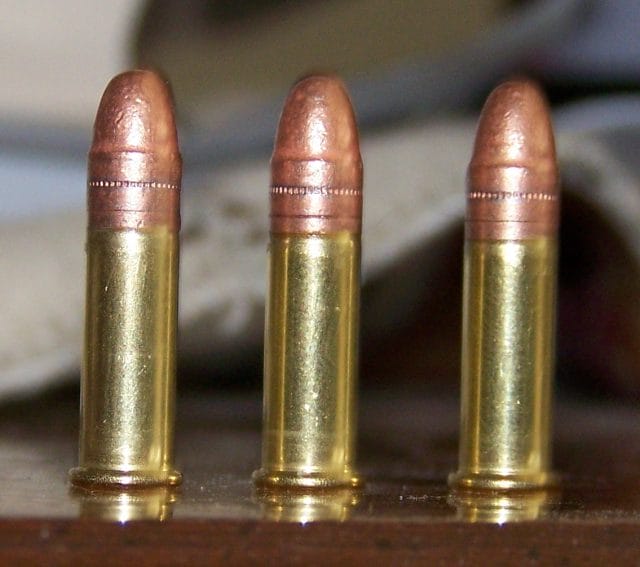 | .22LR | |
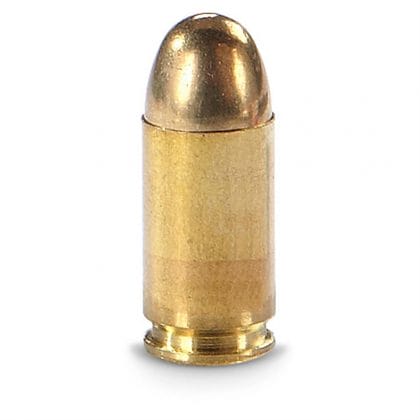 | .380 ACP | |
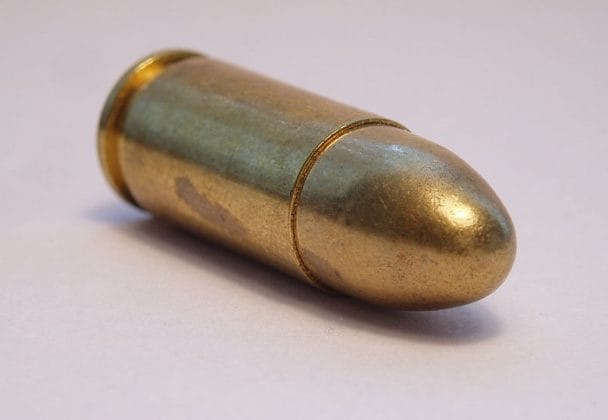 | 9MM | |
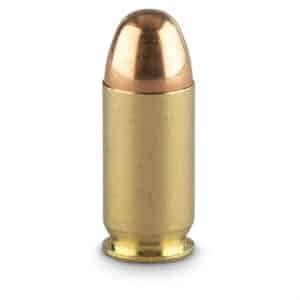 | .40 S&W | |
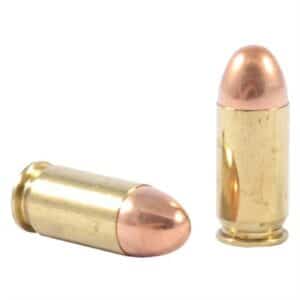 | .45 ACP | |
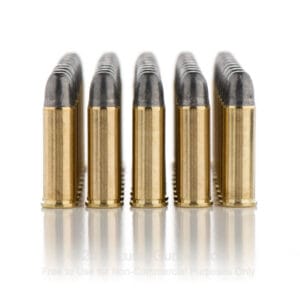 | .38 Special Ammo | |
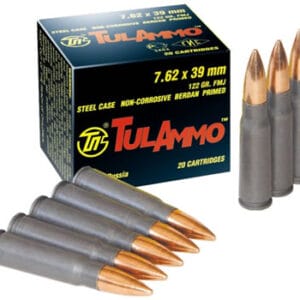 | 7.62X39MM | |
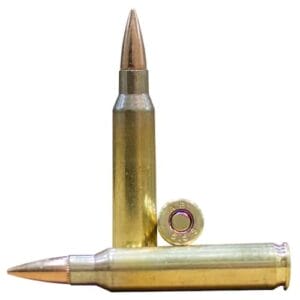 | 5.56X45MM/.223 | |
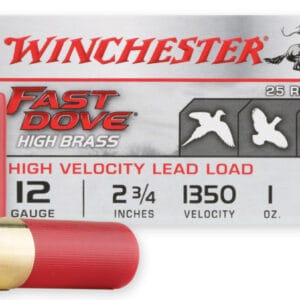 | 12 Guage Shotgun Shell |
.22LR
This is one of the most common calibers sold throughout the world. The average weight of this bullet is roughly 20–40 grains and can be shot in rifles and pistols.
Recoil isn’t an issue which makes it suitable for beginners or for those who still aren’t familiar with firearms.
Another reason why these bullets are usually used for beginners is the lower cost. Youth shooting programs almost always use. 22LR bullets as they are only a little bit more powerful than a pellet gun.
Military weapons don’t use this kind of ammunition and it doesn’t provide any sort of stopping power for self-defense situations.
.380 ACP
Now we’re definitely getting into the more powerful types of ammunition. There is relatively little recoil with this bullet and it creates very powerful penetration at close range.
Another common term for this bullet is the “nine“, which has become extremely popular for smaller pistols that can be carried via concealed holsters. It’s a little bit more expensive at roughly $.30 a round.
9MM
The 9MM was first known as the 9MM Luger which was a German weapon, but now most people refer to it by the common nickname “9mm” or nine mil.
For most shooters this is the go-to round, also used by military units (now switching to modular pistols) as well as law enforcement units throughout the world.
While it might seem difficult to believe the 9mm is actually the exact same size of bullet in a .380 as well as that .36. Naturally the difference behind these is the fire power in the cartridge. A typical 9MM round weighs anywhere between 116–149 grains which makes it pretty powerful for its size.
.40 S&W
The .40 S&W is the stronger more powerful relative of the 9MM. This bullet was crafted for use by the FBI and gained quick popularity throughout the world afterwards.
Bullet weights are a little bit heavier ranging from 160 all the way up to 180 g. Luckily, S&W ammo is still quite cheap at about the same price as 9MM.
.45 ACP
This bullet was created and designed by John Browning who was the inventor of the 1911 pistol. The 1911 pistol is one of the oldest and most reliable pistols made to date.
The .45 ACP is a big bad bullet with some serious power behind it. For those who want to pack a serious punch the .45 ACP is the go-to weapon for special force operators. It’s a little bit more expensive at roughly $.40 per round, but we think it’s well worth it.
.38 Special Ammo
This is designed to be used in revolvers. The cartridge is slightly longer and contains more powder which makes it a heavier and slower bullet then its predecessor the 9MM. This is another round that is commonly used by the FBI and tactical teams.
The popular .357 magnum is the exact same round, however, the magnum is a bit longer. You can even fire a .38 special with a .357 magnum. However we advise you to not try doing this the other way around. 😉
7.62X39MM
This is the Soviet round designed to be used in the AK-47. Recall isn’t too bad but it has some serious firepower.
Average weight of a bullet is roughly 123 grains, however, some manufacturers differ in their weights. Due to the amount of surplus ammunition on the global market AK ammo is actually very affordable.
5.56X45MM/.223
These two bullets have almost identical dimensions. The .223 is slightly lower pressure than the 5.56. This means that a .223 bullet can be used in 5.56 weapon. Bullets are roughly 55 grains and the cartridge is moderate recoil.
If you’ve ever shot an old school M16/AR–15/M4 then this was the kind of bullet you shot. Prices for these are roughly $.30 per round.
12 Guage Shotgun Shell
We’ve all heard of the infamous 12 gauge shotgun. Like I mentioned before the 12 gauge is actually pretty big with the 10 gauge being a little bit bigger.
A 20 gauge round is actually a little bit smaller in diameter.
Shotgun ammunition varies depending on what you’re planning on using it for.
Here are different kinds of shotgun ammo:
- Birdshot – Shotgun birdshot is a type of shotgun ammunition made up of small pellets or “shot”, typically measuring between .15 and .25 inches in diameter. It is most often used for hunting birds and small game, as it is designed to spread out over a wide area, making it effective at short to medium range. Birdshot is generally considered to be less deadly than other types of shotgun ammunition, such as buckshot or slugs, and it is also less likely to cause collateral damage.
- Buckshot – Shotgun buckshot is a shotgun ammunition consisting of multiple lead pellets that are encased in a single shell. The pellets are typically spherical, but may also be conical or oblong in shape. Shotgun buckshot is designed to spread out upon firing and cause damage to a wider area than a single projectile. It is generally used for hunting and self-defense, as it is more effective at close-range than other types of shotgun ammunition.
- Slugs– Shotgun slugs are large, heavy, single-projectile rounds usually fired from a smoothbore shotgun. They are designed to be extremely accurate and effective at medium and long range, capable of penetrating walls and other hard objects. Unlike most other shotgun ammunition, slugs do not rely on the scattering of multiple pellets, instead relying on the single projectile for all damage. This makes shots fired with slugs more powerful than those fired with shot, and increases their accuracy. Slugs are also used for hunting large game, as the large projectile can cause a great deal of damage.
Prices vary from $.25 a round all the way up to a dollar per round.
Different bullet casing and what it does
Next we’re going to talk about the different kinds of bullet cases to help you understand what each one is and what it does. A commonly confused term between bullets and calibers.
FMJ, Full Metal Jacket Bullets

This is one of the most common types of bullets. The interior is composed of a soft metal core like lead which is surrounded by a denser metal like copper.
These rounds are usually pointy and even sometimes flat. FMJ rounds will typically go right through an assailant and make only a small entry wound and a large exit wound. These pack some serious power on the range and are fairly inexpensive.
HP, Hollowpoint rounds

They pack some serious stopping power and are the go-to weapons for special forces, tactical units and concealed weapons.
OTM, Open Tip Match

OTM rounds are sometimes referred to as open tip match rounds since they are commonly used by a long distance shooters.
Some people believe that an OTM round is made in a more consistent manner than an FMJ round.
Ballistic Tip Bullets

These are typically utilized by hunters. If you take a look at the bottom of the round you’ll notice that it’s slightly more streamlined. We talked about this earlier when we discussed tail boat rounds which function to prevent drag while the bullet moves through the air.
Soft Point Bullets

The idea behind this is that the lead should flatten upon impact, however, in most situations we would suggest that you use a ballistic tip over a soft point.
Shotgun Shot Vs Slug
A slug is just a big bullet, whereas, shot consists of a lot of tiny little projectiles. Both kinds of cartridges involve the same kinds of components.
Earlier we discussed the four different components: case, powder, projectile and primer.
The majority of ammo cartridges contain only a single projectile or bullets. These are commonly referred to as a bullet or a slug.
When it comes to shotguns bullets are known as shot.
Hence the name shotgun!
Within a shot cartridge are hundreds of smaller balls usually made of lead or metal which are spread over a wider area. One of the benefits of this kind of cartridge is it allows a moving target to be hit much more accurately than with a single shot.
Shotgun shells are generally composed of plastic with a backing made of brass that contains the primer.
Want to add more Bullets, Calibers and Cartridges knowledge to this aricle?
If you have any other info you’d like to recommend adding to this guide please drop it in a comment below.





















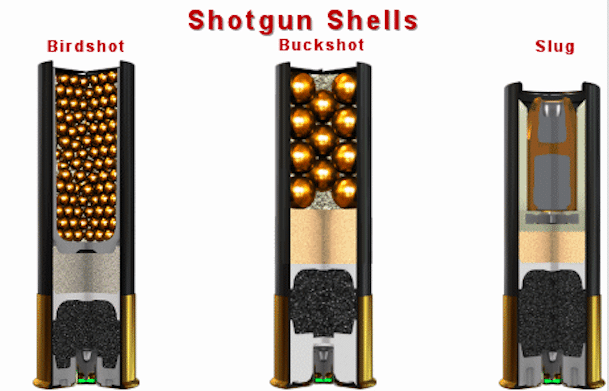
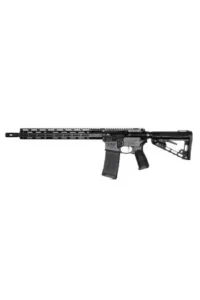
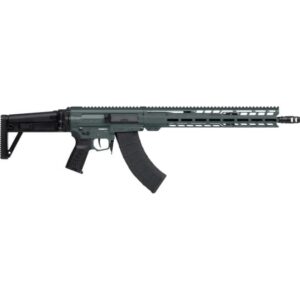
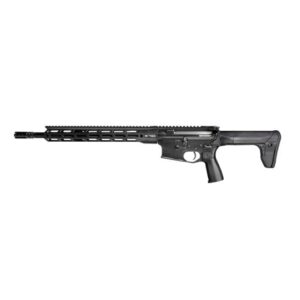
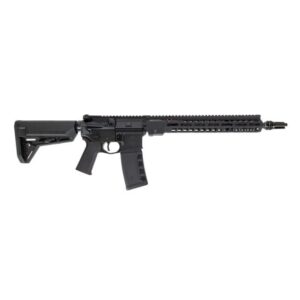






10 Responses
I am looking for info on 30 carbine pistols. can’t seem to find anything.
I enjoyed reading very informative write up, and great the great info it provides! But I still have great difficulty buying ammo that I am allowed to shoot at the range I go to. It is an indoor range, and they do not allow hard, steel bullets to be used as they destroy the range’s equipment, target holders and retrieving mechanisms. So they only allow lead or brass bullets to be shot downrange.
But no matter how hard I try to buy ammo on line, bullet companies never….NEVER make it very clear just what is being fired downrange, is actually made of! They might often mention FMJ, but then not say what the casing, or harder metal surrounding the bullet is made of. I can use bullets encased in brass, but not in steel, but most ammo sales or companies never specify what is actually going downrange! I have a beautiful 1911, and I did all the homework I could, and I bought 500 rounds of Wolf 45 caliber bullets, which mentioned brass casings, but not until I received them, did I discover the only brass they were talking about on these bullets, was the brass cartridge case shell that stays in my gun, as their steel bullet speeds downrange!
And still, even as I search on line for ammo I can use on my range, ammo that will not attract a magnet, I still have great difficulty finding out, for sure, which are lead bullets, encased in brass, and “soft” enough for me to use at my range. Why don’t ammo companies clearly differentiate, and describe what metals are in their bullets, or their cartridges, and which metals actually go down range, and which metals stay behind? Sincerely, Frank Fulton 401-524-8936 (phone greatly preferred) or e-mail at lizaluba@cox.net
Great write up, and great info, but I still have great difficulty buying ammo that I am allowed to shoot at the range I go to. it is an indoor range, and they do not allow hard, steel bullets to be used as they destroy the range’s equipment, target holders and retrieving mechanisms. So they only allow lead or brass bullets to be shot downrange.
But as i try to but ammo on line, bullet companies never….NEVER make it very clear just what is being fired downrange is actually made of. They might often cay FMJ, but then not say what the casing, or harder metal is made of…..I can use bullets encased in brass, but not in steel, but most ammo sales or companies never specify what is going downrange! I have a beautiful 1911, and I did all the homework I could, and I bought 500 rounds of Wolf 45 caliber bullets, which mentioned brass casings, but not until I received them, did I discover the only brass they were talking about on these bullets, was the brass cartridge shell that stays in my gun, as their steel bullet speeds downrange!
And still, even as I search for ammo I can use on my range, that will not attract a magnet, I still have great difficulty finding out, for sure, which are lead bullets, encased in brass, and “soft” enough for me to use at my range. Why do ammo companies clearly differentiate, and describe what metals in their bullets, or their cartridges, are made of, and which metals actually go down range, and which metals stay behind? Sincerely, Frank Fulton 401-524-8936 (phone greatly preferred) or e-mail at lizaluba@cox.net
Hi, long story short I inherited a box of various caliber small arms rounds from a guy who was 40 years firearms instructor for FeeBee. Some are stamped with the usual markings for manufacturer and caliber but some are marked with letters and numbers that I do not comprehend, some are painted with colored lacquer, and there are 2 rimfire cartridges in 9mm and 38 Special. Is there a comprehensive chart or master list that a layman can sort through to ID the more rare cartridge types and where they were made? Thanks in advance for your help. Ken
I always thought grain referred to the amount of gun powder and not the weight of the bullet.
Im new to reloading and i was wondering if say i have a 30-06 caseing can i use that caseing for different size bullets or is there a chart i can get that will tell me what size caseings i can use for different rounds? If this makes any sense lol
Hi folks! You didn’t address the 7.65 French round. How many companies are making this ammunition?
I’ve never heard of the .376 caliber round, I have a .357, maybe a little editing is in order.
Neither have I Jeff… thanks for the correction.
-CB
Wow, that’s a very impressive writeup. Some great info in there. Appreciate you guys taking the time. One suggestion – maybe you could talk a little bit more about the different kinds of ammo used for high powered machine guns?